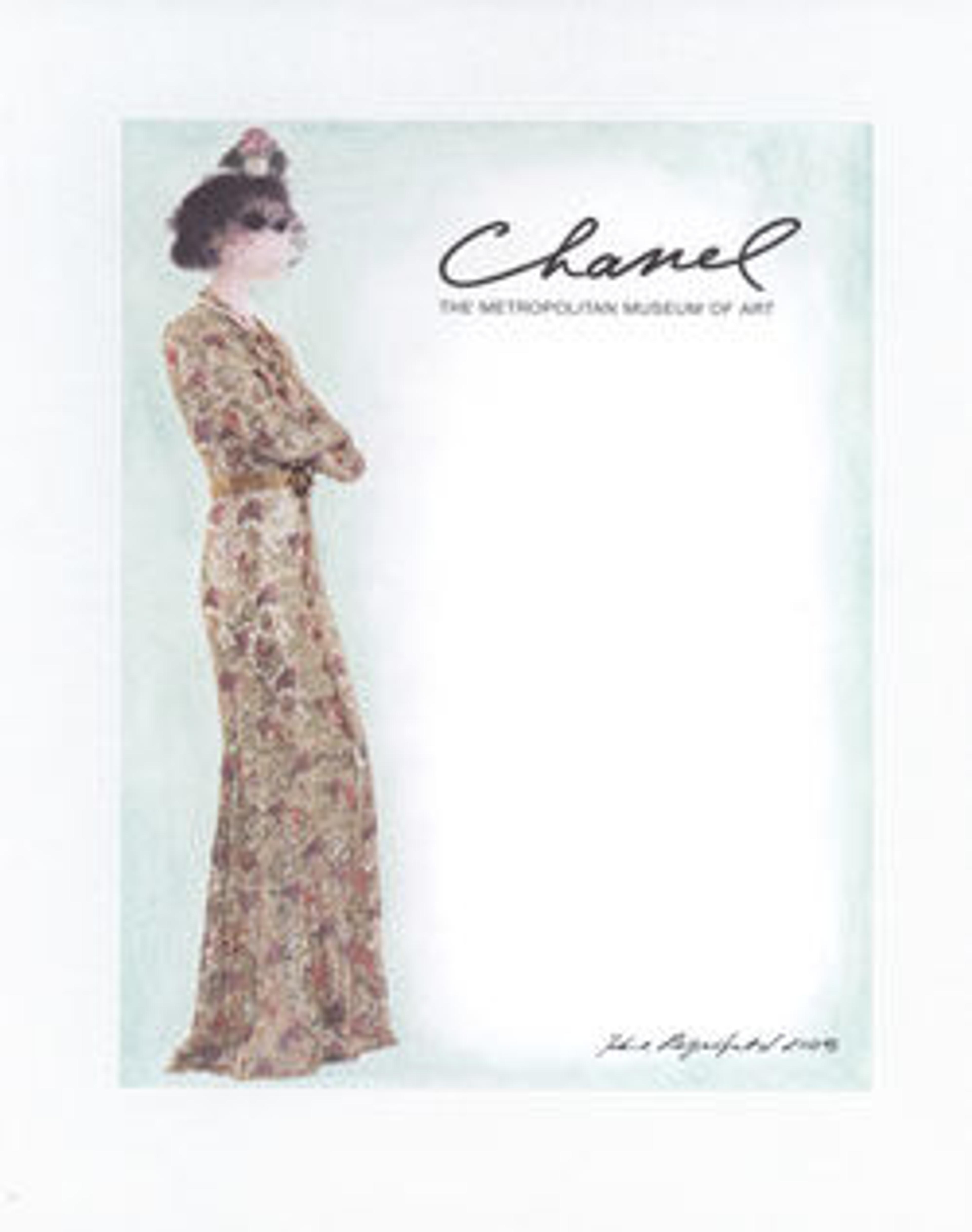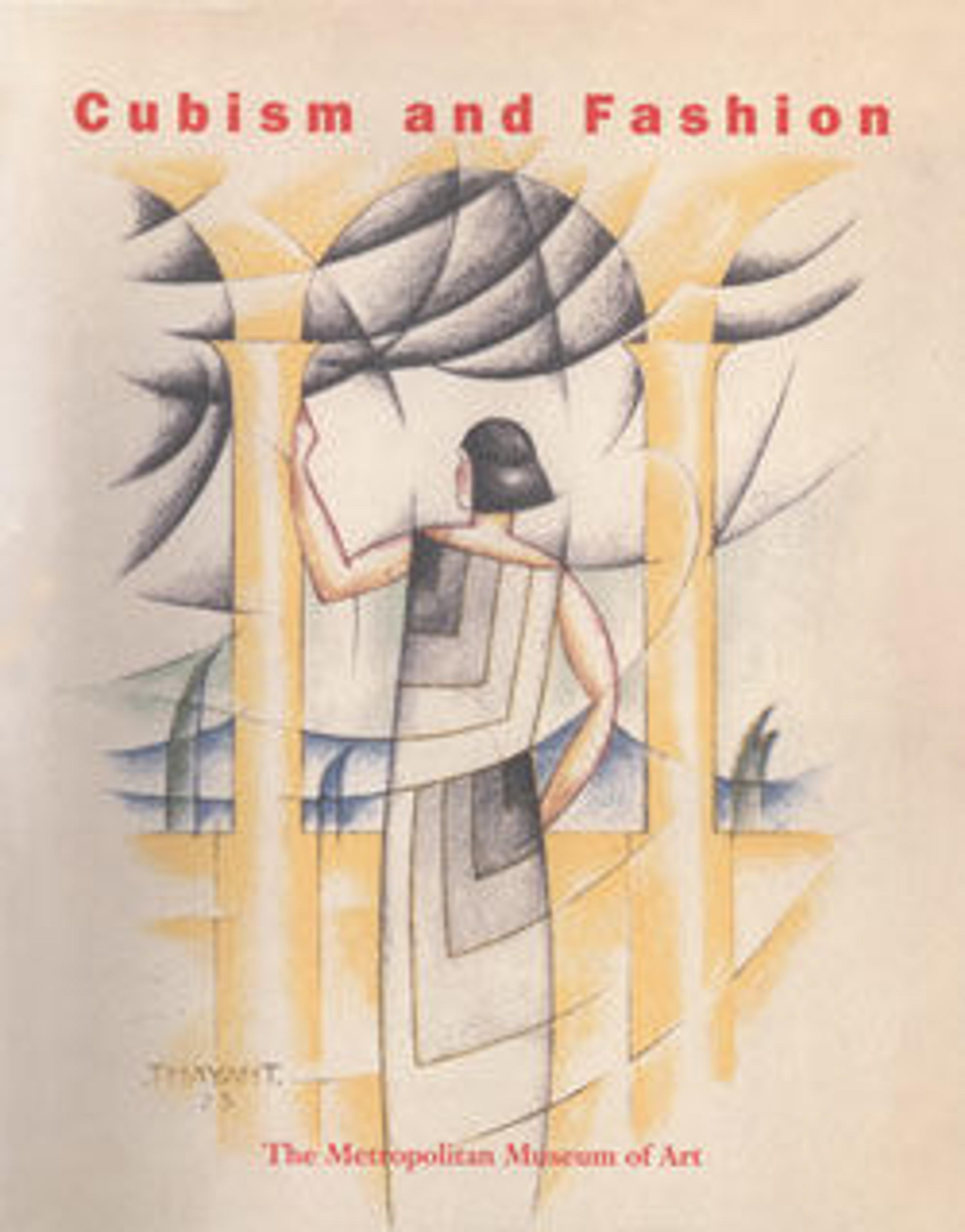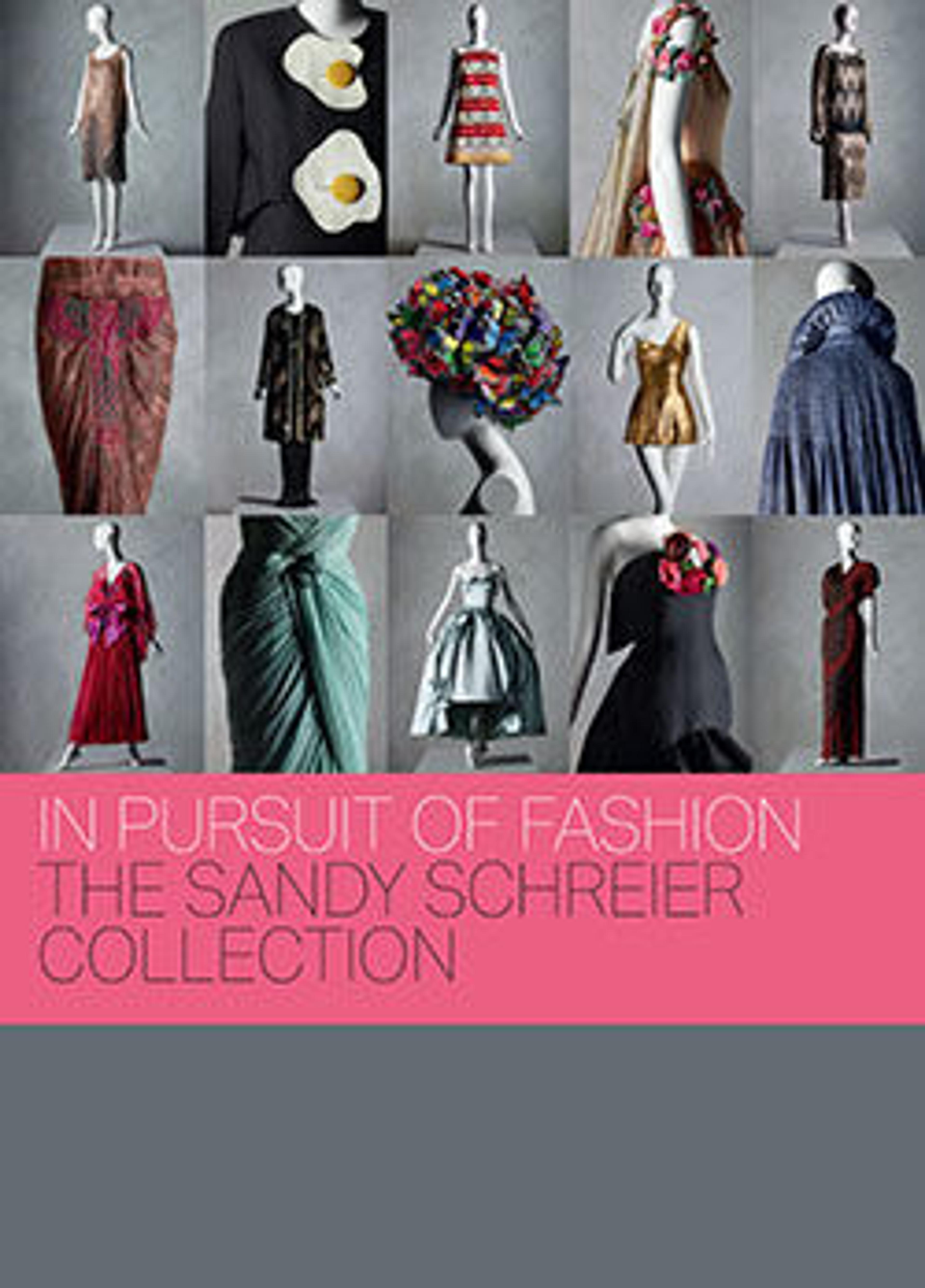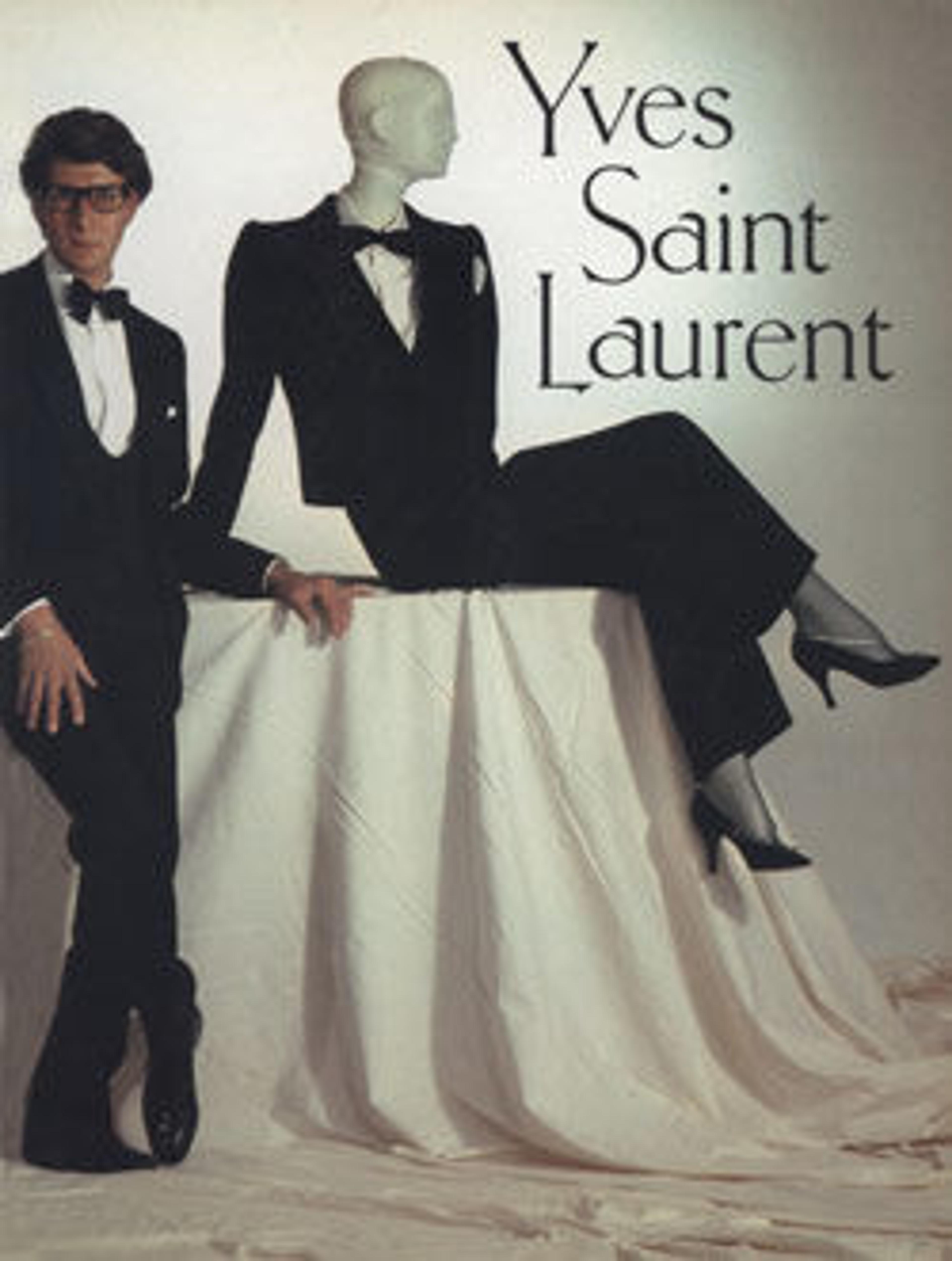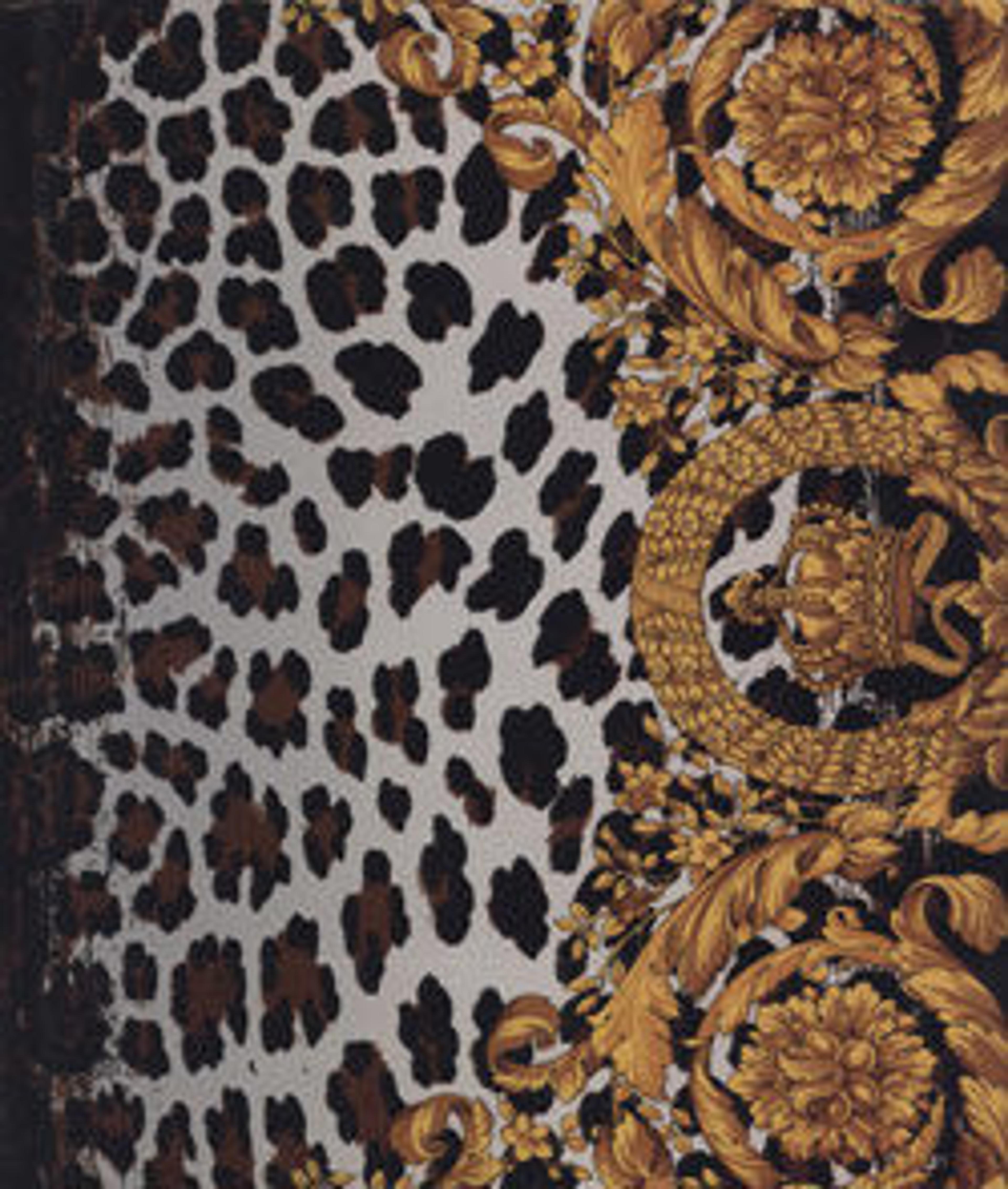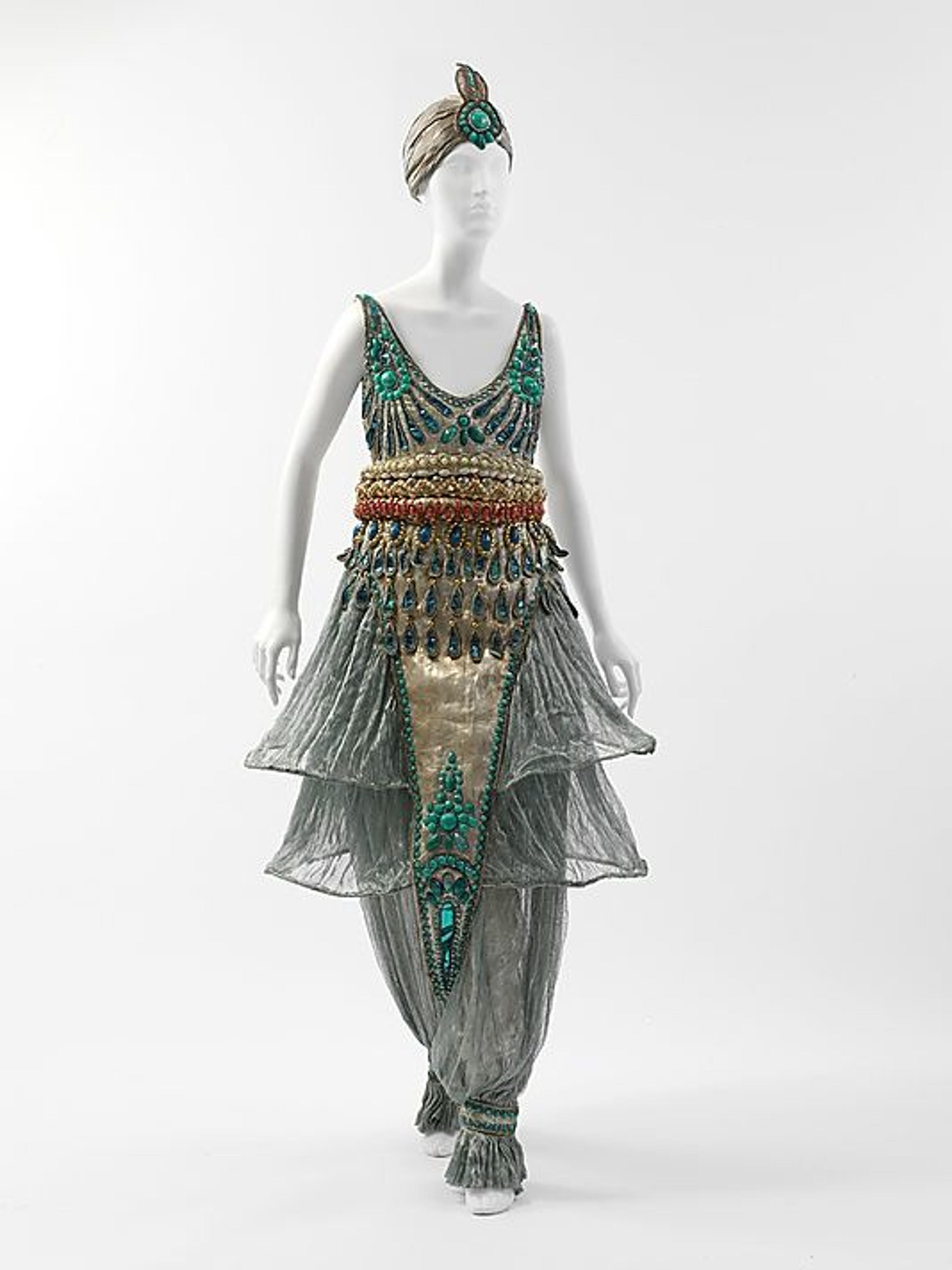
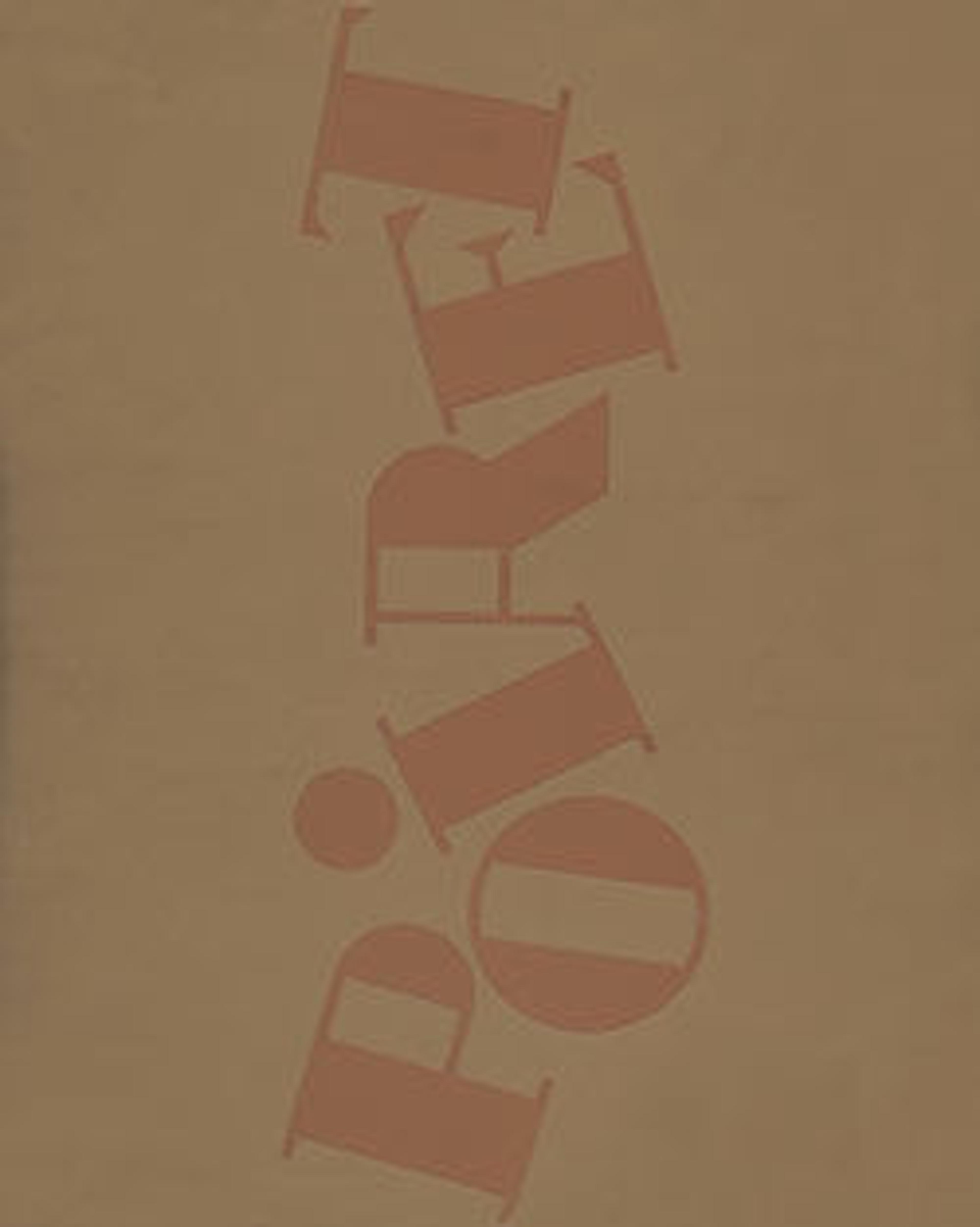
Poiret
Paul Poiret dominated haute couture in the first decade of the twentieth century. Known in America as the "King of Fashion," he liberated women from constricting undergarments, most significantly from the corset, which had shaped the female form almost without interruption for hundreds of years. In so doing, he revolutionized dressmaking, by shifting its emphasis away form the skills of tailoring to those based on the skills of draping. He advocated dresses that hung from the shoulders, pioneering such styles as the chemise, which he introduced as early as 1911.
Beyond his technical innovations, Poiret established the blueprint of the modern fashion business. He founded a perfume and cosmetics company, as well as a decorative arts company. In forming these enterprises, he became the first designer to relate fashion to interior design and to promote a "total lifestyle."
Known for his marketing acumen, Poiret employed the theater as his runway, dressing such high-profile performers as Lillie Langtry, Sarah Bernhardt, Ida Rubenstein, and Isadora Duncan. As an extension of this form of advertising, he threw lavish parties for which he designed many of the costumes. Of there, perhaps the most well-known was his "One Thousand and Second Night," where he promoted two of his most iconic designs: the "lampshade" tunic and the "harem" trousers, or pantaloons, both of which were worn by his wife, Denise.
Poiret's designs reflected the dominant artistic discourses of the early twentieth century, most notably orientalism. An art collector himself, Poiret also worked with a number of important artists, including Raoul Dufy, on designs for fabrics. Two of Poiret's most important collaborations were with the graphic artists Paul Iribe and Georges Lepape, who created deluxe albums for Poiret's elite clients. Many of these pochoir prints are illustrated in this volume and served as inspiration for the remarkable vignettes in the exhibition of Poiret's couture held at the Metropolitan Museum of Art in 2007.
Among the garments featured prominently in this catalogue are those created for Denise Poiret. Dark and reed thin, she was the epitome of Poiret's ideal of beauty. He created some of his most daring and radical designs for his wife, who—as many photographs of her reveal—wore them with a captivating, flamboyant self-confidence. In 2005, many of these unique creations were purchased by the Metropolitan Museum of Art and formed the core of its exhibition "Poiret: King of Fashion." These exciting acquisitions provide new insights into Poirets artistic vision and help to reassert his position as one of the most important designers of the twentieth century.
Met Art in Publication
You May Also Like
Press the down key to skip to the last item.
Citation
———. 2007. Poiret. New York : New Haven: Metropolitan Museum of Art ; Yale University Press.
